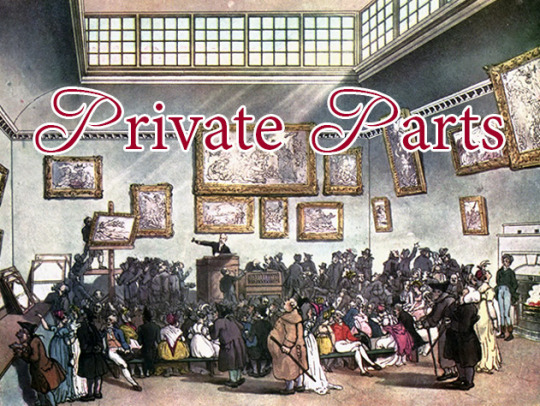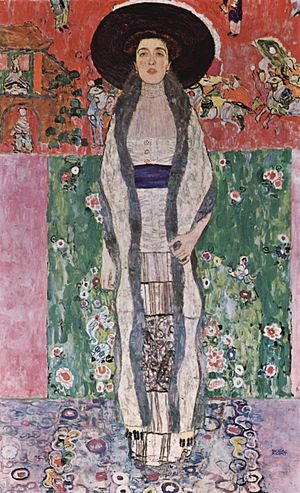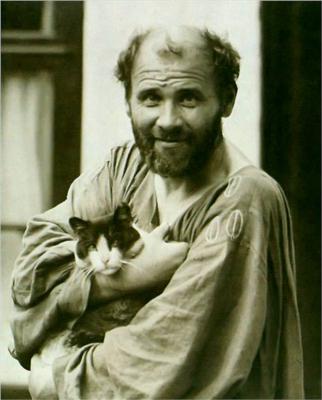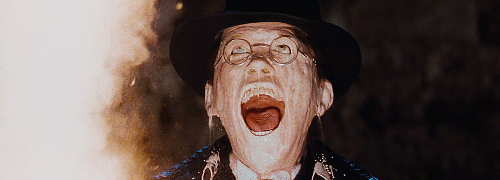
Private Parts is a series exposing the raw, gritty, and true stories behind artworks in private collections. Every week, you’ll find the untold tales of the back stabbings, thefts, and $100 million deals that move these works to secret lairs and impregnable vaults around the world. We’ll always be crazy in love with museums and galleries, but we also believe in giving the people what they want: All the art.
This week, behold Gustav Klimt’s Portrait of Adele Bloch-Bauer II.

See how I leave with every piece of you. - Adele
Adele Bloch-Bauer has the distinction of being the only model that Klimt painted twice. Of course, filtering that info through the transitive property of water cooler gossip gives the implication that Adele and Klimt were getting freaky. Not like there’s any lack of anecdotal evidence for artists moving in on a patron’s lonely missus.
Adele, however, was unhappily married to Austrian sugar magnate Ferdinand Bloch-Bauer. He was much older, and their relationship was little more than a protracted business proposition that left her with a couple miscarriages, crippling loneliness, and death by meningitis.
Despite all that, Adele was really proud of being part of Viennese society’s upper crust. Klimt was a freeballing proto-hippie with a look somewhere between homeless and Hobbit-esque. Their meet cute, however it played out, didn’t lead to any hoistings of boomboxes above his head or her saying something like, “You had me at ‘I’m not wearing any underwear.’” He wasn’t hurting for want of companionship, anyway. Klimt was something of a casanova, a real girlfriend for every day of the week type.

Klimt, the original pussy magnet.
The Bloch-Bauers were Klimt fans up to the artist’s death in 1918. Besides the two portraits, they owned several of the artist’s landscapes and scenes. Whatever lack of emotional affection they held for each other seemed to be made up for by infatuation with fine art and Klimt’s work in particular.
The first major death in this story is where things get a little difficult. Adele succumbed to the aforementioned meningitis in 1925, leaving a will that asked Ferdinand to donate their paintings to the Austrian National Gallery. Ferdinand agreed, but kept delaying the gift until Nazis annexed Austria. Ferdinand took a ‘hell no’ approach to dealing with Nazis and bounced to Prague. Leaving behind almost every possession in Vienna, e.g. all the paintings.
It was a common story among Vienna’s 1%ers, especially those of Jewish descent. The Nazis were never shy about their hatred of anyone familiar with or a fan of Jews, Jewishness, and Judaism. Folks with money and a Jewish backstory got out while getting was good. The German Reich was perfectly aware of this, and was altogether chill about it. Having the likes of Ferdinand run to the hills with just the clothes on their backs made it a lot easier to take everything else.

Raiders of the Lost Ark: The best way to relax after reading about the Nazis’ exploits for a couple hours.
The Nazis developed an efficient method for dealing with this particular situation: Sue for tax evasion. Thus confiscating the Bloch-Bauer sugar factory, his immense estate, and all his Klimts in the most boring way possible. Ferdinand snubbed his nose at the Reich’s legal larceny. Leaving everything he owned, including all the stuff littered across Europe by the Nazis, to his nephew and two nieces in America. After Ferdinand’s death in 1945, his lawyer half-assedly tried to gather his estate which, again, was literally cast about the corners of the continent.
The Allies’ system for repatriating stolen property after the war and Austria’s mafioso approach to wartime reparations throughout the 20th century only complicated the matter for Bloch-Bauer’s heirs. The Allies sent identified stolen goods to the country of origin, which acted like a clearing house. Each country developed its own rules for how to reallocate stolen property to victims or, often, their heirs. Austria, for instance, would grant an export visa to ship artworks and other valuables to America (or anywhere) only on condition that they got a cut. The Bloch-Bauer heirs could get most of their inheritance shipped to their homes in America if they donated all their uncle’s Klimts to Austria. Their lawyer was either too swamped or incompetent to suggest anything other than taking Austria’s crappy deal deal. ‘Cause nothing bad ever happened from giving an Austrian everything they asked for…

The Bloch-Bauer Klimts were hung in the Austrian National Gallery and everything went on ice for more than fifty years. Until 1992, when Egon Schiele’s Portrait of Wally was confiscated by the district attorney in Manhattan while on loan from the Austrian National Gallery. The museum was caught with their pants down. Their fast and loose method of repatriating artworks after war aired in major newspapers around the world. Austria tried saving face by setting up an official board to hear individual cases from those affected by the country’s decades old policies.
In 1999, an Austrian journalist covering restitution matters discovered the nasty specifics surrounding the Bloch-Bauer Klimts, the Nazis, and the Austrian National Gallery. The journalist alerted Ferdinand Bloch-Bauer’s sole living heir, an octogenarian named Maria Altmann living in California, about the government’s shift toward justice. Then Altmann got busy.
Maria tried suing the Austrian government in Austria, but legal fees amounting to $1.6 million made that impossible. Instead, she sued Austria from California. The suit was a stop-and-go affair centered around one question: Was Adele’s will legally binding? Were the paintings always going to end up in the Austrian National Gallery anyway?

The case went on for four years before it reached the U.S. Supreme Court, which ruled in Altmann’s favor. Adele’s will was kind of a suggestion, if anything. And, besides, Ferdinand is the one who bought and paid for the paintings, so Adele had nothing to do with what happened to them. Altmann and Austria agreed to go through binding arbitration in Vienna for a final-final decision. The arbitrators ruled in her favor and the Bloch-Bauer Klimts were finally back in the family’s hands.
The only kink was that almost a decade of trials had cost Altmann a ton of cash. She was in a bind. After getting the paintings in 2006, she turned around and sold them through Christie’s a few months later. That single auction skyrocketed Klimt prices to make the artist a serious heavy. Placing Klimt behind perhaps only Picasso on the auction block. The Portrait of Adele Bloch-Bauer II alone sold for a near record setting $87.9 million to an anonymous private collector. And, just a couple years ago, it went on long term loan to the MoMA in New York, where you can view it to this day.
If you’ve read this piece and are left thinking, “Clayton, I need more of it all. More Klimt. More Adele Bloch-Bauer. More Maria Altmann, preferably portrayed by that silver fox Helen Mirren,” then have I got a treat for you. There’s a ton of movies, documentaries, and books out there that go into greater detail on this story. Just last year, there was The Woman in Gold, starring Dame Helen Mirren as Altmann. There’s also Rape of Europa and Art of the Heist if you want something more factual. It’s a pick your poison market.

By Clayton
Sources
- http://www.artnews.com/2006/01/31/contested-klimt-paintings-awarded-to-…
- http://www.whudat.de/top-20-most-expensive-paintings-in-the-world/
- http://www.moma.org/calendar/exhibitions/1480?locale=en
- http://www.moma.org/explore/inside_out/2014/09/05/now-in-the-galleries-…
- http://nypost.com/2015/03/31/the-real-story-behind-the-135m-portrait-th…
- http://www.independent.co.uk/arts-entertainment/art/news/francis-bacon-…
- https://supreme.justia.com/cases/federal/us/541/677/
- https://www.oyez.org/cases/2003/03-13
- https://plone.unige.ch/art-adr/cases-affaires/6-klimt-paintings-2013-ma…
- https://books.google.com/books?id=_7lUCgAAQBAJ&pg=PA512&lpg=PA512&dq=Fe…
- Page 512 https://books.google.com/books?id=_7lUCgAAQBAJ&pg=PA512&lpg=PA512&dq=Fe…











